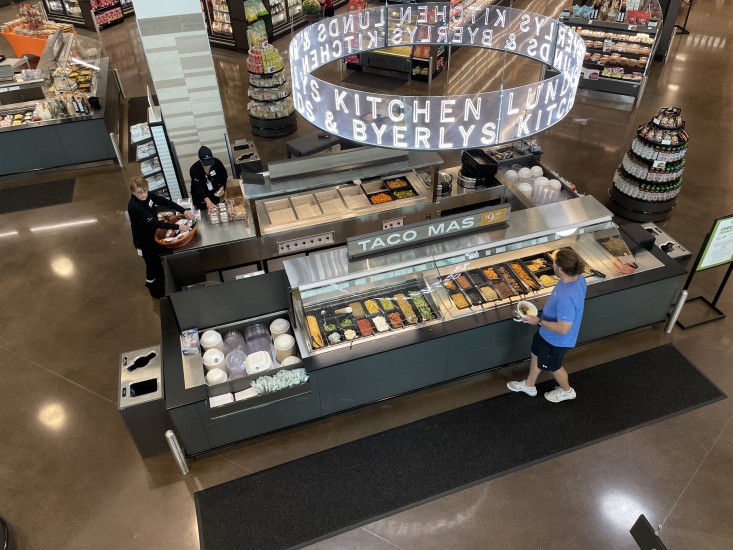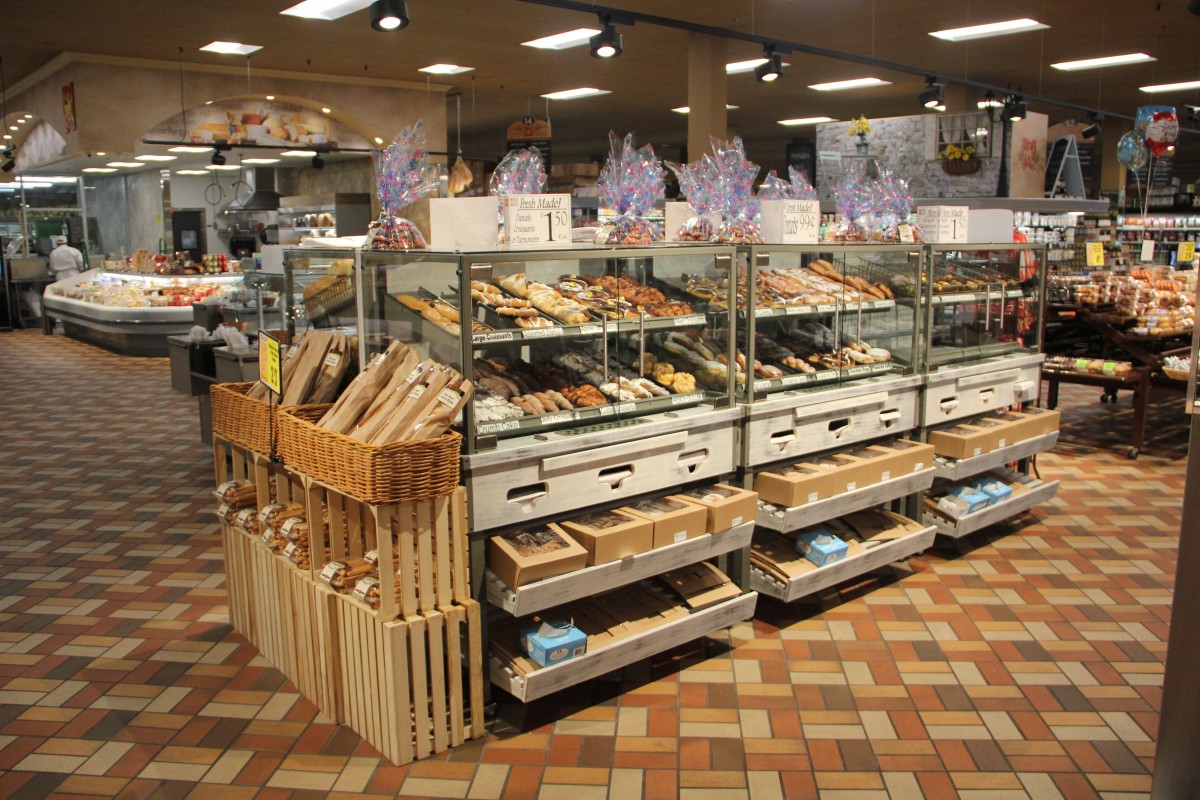There is a significant amount of research and thought put into designing grocery store displays and shelving. The layout and design of a grocery store can have a substantial impact on consumer behavior, influencing what they buy… and how much they spend.
At Cayuga, we design our store displays using data collected from a variety of sources, including research into consumer behavior, merchandising strategies, and developing technology. By focusing on this type of research, we help retailers create displays that attract shoppers, drive sales, and enhance the overall shopping experience.
The impact of in-store displays on consumer behavior
In-store displays play a crucial role in shaping consumer decisions and purchasing patterns. Here are some key points highlighting their impact:
-
Well-designed, eye-catching displays attract shoppers' attention and draw customers in, making them more likely to notice specific products or promotions. A great example of this is the display we made to showcase the honey Freson Bros. sells from their rooftop beehives.
-
In-store displays often trigger impulse purchases, particularly when strategically positioned near the checkouts. These displays compel customers to spontaneously purchase items they may not have originally intended to buy. With this in mind, we design our products — such as our walkaround shelving, impulse, and bulk bin displays — to offer the flexibility grocers need to take full advantage of these impulsive tendencies.
-
Seeing a specific brand or product prominently displayed in-store can influence shoppers' perceptions and choices, leading to increased brand engagement and sales. Research shows that in-store displays are often more effective than other standard promotional activities used to attract customers, including price cuts.
-
In-store displays are a powerful tool for promoting new products, limited-time offers, and seasonal items. By showcasing these products in prominent locations, displays can drive interest and create a sense of urgency among shoppers. By building displays that are flexible, we make it possible for grocers to continually change things up, adding excitement and interest to the shopping experience.
-
Strategic placement of displays can help guide shoppers through the store, highlight specific products, and encourage upselling or cross-selling. For example, placing a display of specialty breads and condiments by the deli can prompt customers to purchase these items together, increasing the overall sale value.
-
Engaging displays create a visually appealing environment, spark curiosity, and make the shopping trip more enjoyable and memorable for customers. And when shoppers enjoy the experience, they are more inclined to become loyal customers and return with their hard-earned money.
Merchandising strategies for in-store displays
Research suggests using specific merchandising strategies for in-store displays can make them more effective, maximizing their impact on consumer behavior and sales.
-
Placing products at eye level increases visibility and the likelihood of being noticed by shoppers. That’s why top brands pay extra for those prime positions.
-
Products placed on endcaps — the displays at the end of aisles — can significantly increase sales for featured products and promotions due to their high visibility.
-
Using contrasting colors, lighting, or signage in displays can make products stand out and attract attention. The lights we incorporate in our displays, for example, accentuate the specific product they’re designed for — meat & deli displays benefit from lights with a reddish tinge, produce shines in natural light, and a warm, yellow light enhances the golden brown tones of fresh baked goods.
-
Creating displays that tell a story or evoke emotion can enhance consumer engagement and create a more memorable and immersive shopping experience, driving sales.
-
By using flexible displays, like our fresh go bins and market tables, and rotating displays to reflect changing seasons, holidays, or popular trends, retailers can keep their offerings fresh and enticing.
-
Displays that align with a brand's values and identity can strengthen brand perception, build trust and foster customer loyalty. Consistent branding makes customers feel like they’re in the right place and can trust you to deliver what your brand promises them — which is why we design standard product platforms that can be easily customized.
Technology and its impact on in-store displays
Technology has significantly transformed in-store displays in supermarkets, offering new opportunities to engage customers, streamline operations, and enhance the overall shopping experience.
-
Incorporating interactive elements such as touchscreens, digital signage, or product demos can enhance engagement and provide shoppers with a more interactive shopping experience that encourages them to explore new products.
-
Using data analytics to track the performance of in-store displays can help grocers optimize their merchandising efforts. By analyzing sales data, foot traffic patterns, and customer behavior, retailers can make data-informed decisions to improve display effectiveness.
-
Mobile technologies such as QR codes, mobile apps, and NFC tags can be integrated with in-store displays to provide additional product information, promotions, and interactive experiences.
Overcoming challenges in a competitive marketplace
Grocers face a number of challenges that can impact their ability to attract and retain customers.
-
In a crowded store environment, grocers must find ways to capture and maintain customers' attention amidst distractions and competing stimuli.
-
Limited space can restrict the size and number of displays that grocers can set up, making it challenging to showcase a wide range of products effectively. At Cayuga, we design and build a complete range of display units specifically tailored for stores with a smaller footprint.
-
Understanding and keeping up with evolving consumer preferences and shopping behaviors can be a challenge for grocers when designing displays that resonate with their target audience.
-
Grocers need to be able to adapt their displays frequently to align with seasonal trends, promotions, or changing consumer preferences, which is why flexibility is one of our key design considerations here at Cayuga.
The main goal of in-store displays is to grab shoppers' attention, especially in fast-moving consumer goods where many purchases are unplanned, as anyone who has run into the grocery store for “one thing” can attest to.
At Cayuga, we believe in-store displays can be a competitive promotional tool that can help attract loyal customers and boost sales — that’s why we’re constantly looking for ways to improve our in-store displays.
We have everything you need — from heated or refrigerated units and display cases for fresh and prepared foods — to make shopping for groceries feel more like an experience and less of a chore. Our modular designs are flexible and easily customizable to suit your store’s or company’s needs — so give us a call today, and let’s chat!




